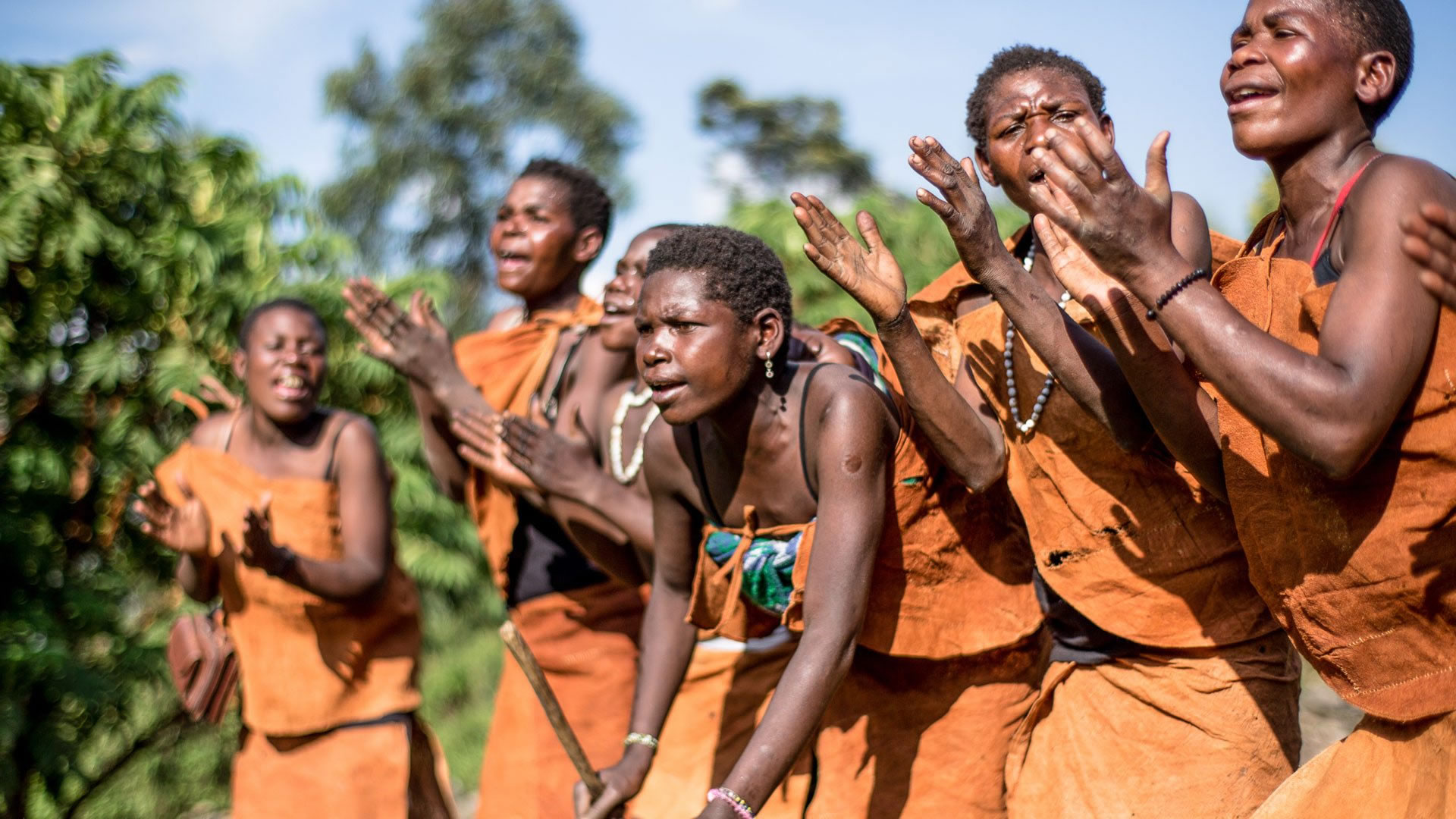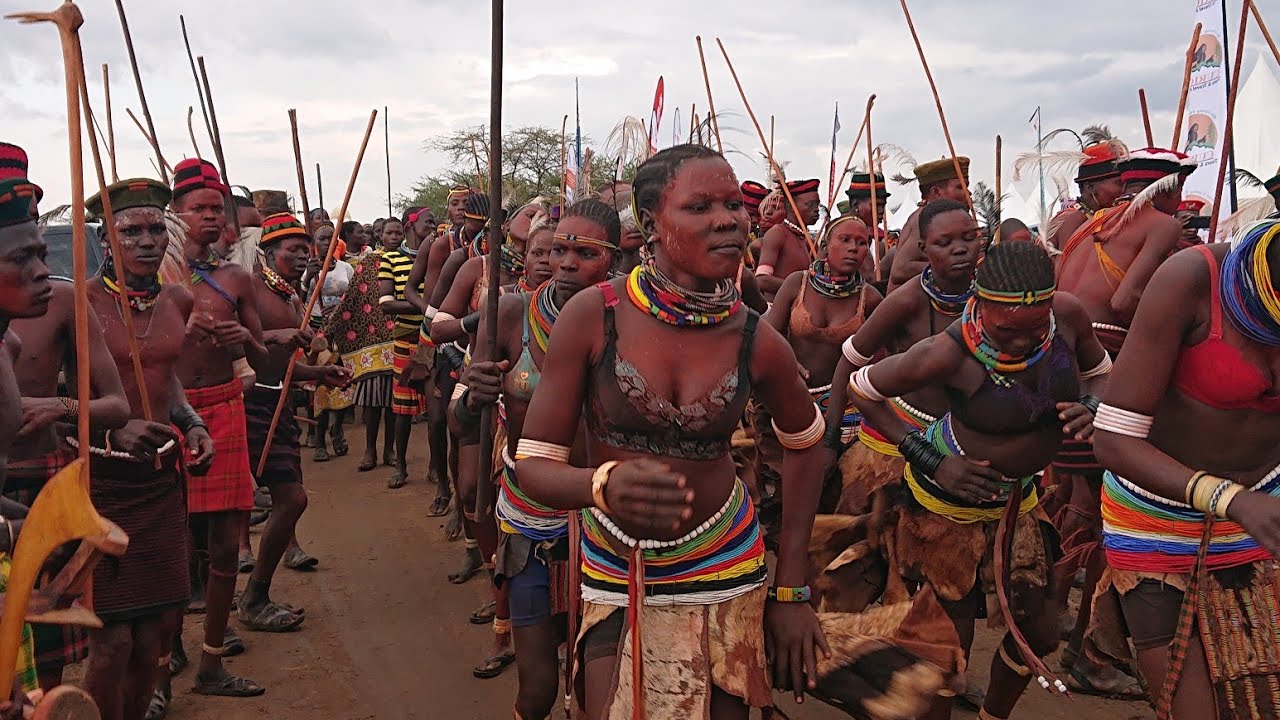Uganda Cultural Experience
Uganda is divided into 4 regions including the Northern, Eastern, and Western and Central regions categorised into about 56 tribes making her a destination of diverse cultural heritage and beliefs. These are seen through the way Ugandans organize their ceremonies, rituals, how they carry out traditional practices and their different ways of singing and dancing with unique traditional equipment.

Batwa Pygmies Cultural Experience
Known as the “Keepers of the Forest” the enchanting Batwa pygmies of the Bwindi Impenetrable National Park are a hunter-gatherer tribe that has lived side-by-side with the wildlife of this ancient park for thousands of years. Strap on your hiking boots for this full-day adventure as it kick-starts with a 3-hour hike through the forest to a Batwa settlement. At this Batwa homestead observe how the women prepare, cook and serve a meal. Engage with medicine men and learn about the medicinal properties of the lush forest flora. Hear ancient legends and traditional songs. After a warm welcome, your 1-hour cultural immersion begins. Enjoy a lively music performance, learn about the Batwa’s fascinating way of life; from religion to their food gathering and hunting techniques, and interact with the tribesmen.
Living in harmony with the forest and surviving by hunting small game using bows and arrows, this fascinating excursion gives great insight into how this ancient tribe exist. Foraging in the lush undergrowth and gathering plants for both food and medicinal purposes, the Batwa have a symbiotic relationship with the wild. In an effort to reveal their amazing heritage and traditions with the world, this is a magnificent opportunity to experience the forest through their eyes. Once acknowledged as the owners of the high mountain forest, there are very few Batwa in existence today. |

Karamoja Cultural Experience
The Karamoja region comprises of several ethnic groups that are classified into Karamoja clusters. These ethnic groups include the Dodoth people in the north, Jie people in the central and the Karamojong people in the central south. However the Karamojong people are further also divided tribes and clans such as the Matheniko, Bokora, Pian, Tepeth also known as the So, Pokoth, the IK to mention a few. The Karamojong people of Uganda are similar to the Maasai people of Kenya and Tanzania, Turkana in Kenya and Nyangotom people who live on the Omo Valley of Ethiopia. The most unique tribe is the IK people who reside up on Mount Morungole in Kaabong district who were displaced to settle on Mount Morungole, today travellers hike that mountain to visit this same group of people. The Dodoth settled in Kaabong district, the Jie people who are known to be cattle warriors, settled in the current Kotido district. The rest of the Karamojong people settled in the remaining districts of Abim, Moroto, Napak, Amudat and Nakapiripirit.
Cultural tours in Karamoja region are the best cultural experiences for travellers’ varying from Karamoja village tours and a night with the Karamojong nomads warriors, and community visits. These experiences are also practical where visitors get to interact with the community while they share their rich heritage. Travellers will also participate in various domestic activities while learning the economic activities like Basket weaving, Hut weaving, Bead making, Clay sculpting, and Bee keeping and do the daily life activities; like preparing their local food to celebrations with traditional folklore, what unforgettable journey, this can be! |
Visiti Kampala Cultural Sites
Kampala city is situated in the central part of Uganda where we find the Kingdom Buganda. Buganda kingdom is the richest historical kingdom in Uganda unless the other existing kingdoms in Uganda, given that it also contributed to the end of colonisation of Uganda and coming of the explorers and missionaries to Uganda.
Visit the Uganda Museum:
The Uganda Museum is the oldest museum in the Uganda. It first exhibited in 1905 in its former location on Kampala hill, before moving to its current location in 1954 along the Kira road. The museum is great for a very informative and in-depth look at Uganda’s pre-colonial history. With various collections from all over Africa, the Uganda museum provides a wide variety of options for the history enthusiast who is keen to know more about Africa’s past. Other museums to look out for is the Ssemaggulu royal museum, the Kasubi royal tombs
Visit the Bahai Temple:
Kampala is the only temple of the
Bahai faith in the whole of Africa. Bahai is an all-inclusive faith that can be called a blended fusion of all the other major faiths. The Bahai Temple in Uganda was opened in February of 1962 and sits on top of Kikaya Hill. Learning about the Bahai faith is a very interesting activity that we highly recommend for people with an interest in societal norms and religions.